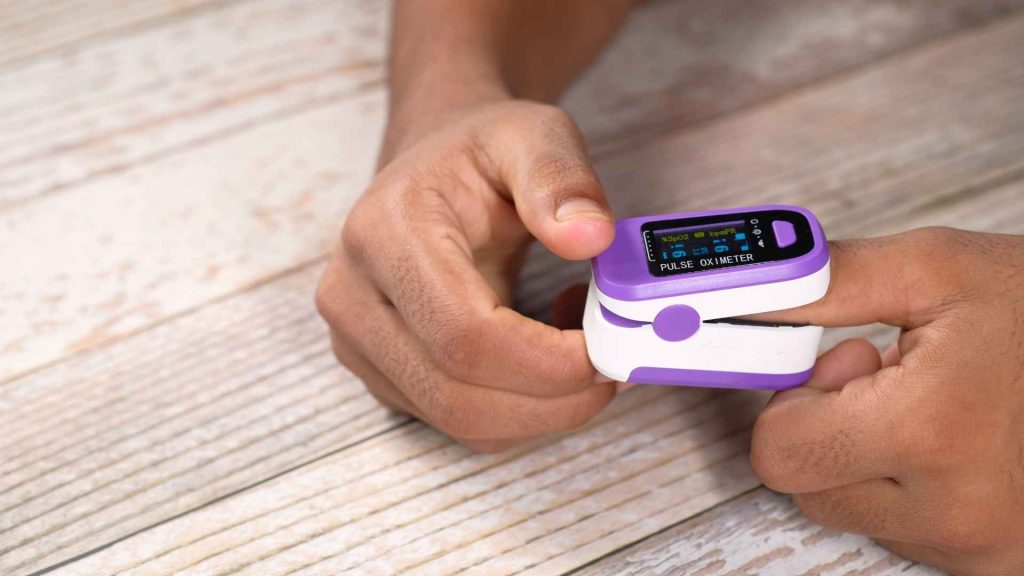
Pulse oximetry is a medical device that measures the amount of oxygen carried by the red blood cells. It is used to diagnose lung disease and evaluate treatment options. Although it isn’t clinically accurate, pulse polygonometry is a safe and reliable method to assess blood oxygenation. It is fast, painless and poses no risks. However, in the case of an emergency, a physician might want to use a medical saturation monitor.
The technology behind pulse oximetry is simple. It measures blood oxygen levels by measuring the changes in light absorption. It measures oxygen in the blood, and can tell the patient's heart rate or oxygen saturation. It is very accurate and is used to diagnose several medical conditions. The monitor is becoming more popular in home care and general wellness settings. They are a reliable way to check blood oxygen levels in patients.
What does a blood oxygen meter do?
While a blood oxygen meter isn't medically useful, it is important that you understand the concept. It is a medical device that measures red blood cell oxygen. It is a simple, non-invasive device that does not require a blood sample. The screen shows the level of oxygen saturation in red blood cells. This information can be used in order to determine if a patient needs supplemental oxygen. The saturation number is not the same as the pO2 value, which is measured by a sample of blood taken from an artery. Before making a decision, it is important that you discuss the value with your doctor.
The blood oxygen meter measures the oxygen saturation in the body. It doesn't need to be drawn from blood. On the screen, a person's oxygen saturation will be displayed. The reading is a reflection of the amount of oxygen in the red blood cells. This information can be used to determine if a patient needs supplemental oxygen. The saturation number is not the same as the pO2 value. This is calculated by drawing blood from an artery. Ask your doctor for the meanings of these values.
Pulse oximetry is a non-invasive test to measure the oxygen levels in the body. It measures oxygen levels using two wavelengths of light. The blood oxygen meter is a fast, convenient, and cost-effective method of monitoring the oxygenation of the body. It is a good option for home care and for professional medical settings. However, pulse oximetry may not be 100% accurate and is not meant to replace arterial blood gas analysis.
A COVID-19 monitor can be used to diagnose low blood oxygen. A person's Sp02 level can be determined through a series of tests. It is important to measure the blood oxygen levels to determine if someone has COVID-19. A blood oxygen meter can detect this condition if the oxygen levels in the blood are lower than what normal.
This monitor is a handheld device that measures the oxygen saturation level of the blood using light absorption. It displays information on a display that shows the oxygen level in the blood and the heart rate. Supplemental oxygen is often required by COVID patients to prevent dehydration. A blood oxygen meter is a useful tool for monitoring COVID and can be used at home. It is a quick and affordable way to check the oxygen level in a patient.
An Oxygen Saturation monitor doesn’t require a sample of blood, unlike a blood oxygen meter. It measures oxygen saturation in red blood cells. This monitor can be used to diagnose and determine if an individual requires supplemental oxygen. An oximeter can be used without a blood sample. An oxygen saturation monitor may be the right option for you.
A blood oxygen meter measures oxygen levels in blood. It doesn't require blood, so there's no need to worry about getting blood samples or a needle stick. A blood oxygen meter is a useful device that can monitor the oxygen levels of individuals and is easy to keep at your home. Patients with COVID can also use a blood oxygen meter. This device can also be used to monitor the level of oxygen in a patient's body.